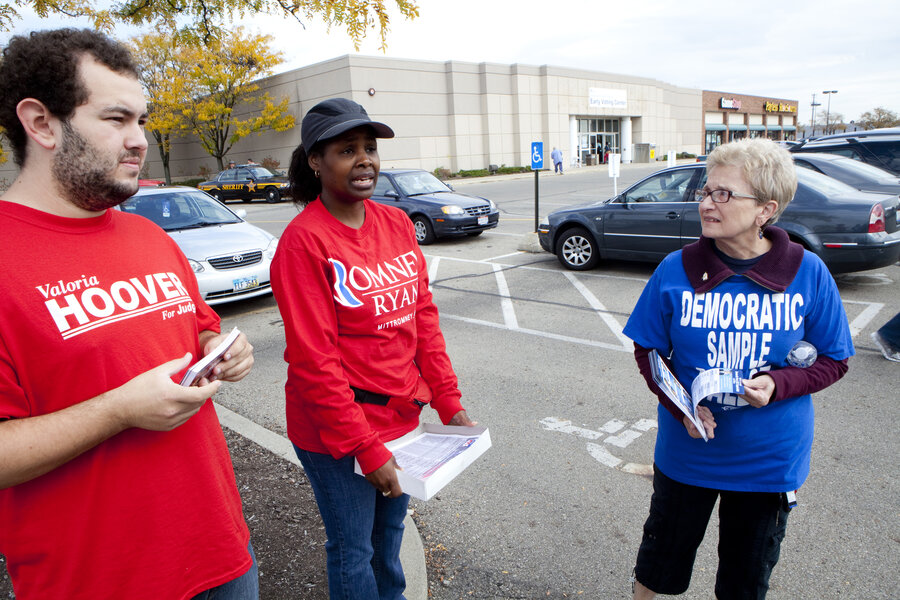Why Democrats and Republicans are so wrong about each other
Loading...
Republicans and Democrats have highly inaccurate views of each other, say two political scientists from the University of California, Berkeley, Douglas Ahler and Gaurav Sood, in a recent study.
Republicans disproportionately view the majority of Democrats as LGBT, African American, atheist union members, and Democrats disproportionally view Republicans as southern evangelicals, over 65 years old, and earning over $250,000 a year. But the truth is, both Republicans and Democrats "considerably overestimate" these party stereotypes, they write in a recent study.
“[O]n average, people think that 32% of Democratic supporters are LGBT (6% in reality) and 38% of Republican supporters earn over $250,000 per year (2%),” write Dr. Sood and Mr. Ahler, a graduate student in political science.
Most people perceive members of their own party a bit more accurately.
But the most surprising – and perhaps concerning – aspect of the study finds that Americans are more likely to believe misconceptions about the opposing party if they pay attention to politics.
“Those who report following the news most closely also hold the most stereotype-inflated beliefs about party composition,” say the authors.
In fact, the more interest a partisan – on either side – has in politics, the more biased their perceptions about the other party, suggesting that political media teaches or reinforces these party stereotypes, rather than accurate representations.
According to a Pew Research study from 2014, "liberals and conservatives inhabit different worlds" when it comes to the media. "There is little overlap in the news sources they turn to and trust," with 40 percent of liberals citing CNN, MSNBC, and NPR as their main news sources, and 47 percent of conservatives turning to Fox News. Each group's ignorance about the other party's true demographics are understandable, says Pew, because they choose to discuss politics – or learn about politics – from "like-minded individuals."
“It’s yet another example, in other words, of a case where more information about politics leads to less actual knowledge and simply more familiarity with self-justifying stereotypes,” explains Vox’s Matthew Yglesias in response to Ahler and Soot's study. “Highly informed Democrats ‘know’ that Republicans are just a bunch of old, rich, Southern evangelicals, while highly informed Republicans ‘know’ that Democrats are gay, black union members. The banal reality that the median member of both parties is a middle-aged, middle-class heterosexual white person gets obscured not by ignorance but by knowledge.”
But not all hope is lost, say Ahler and Sood. Because when given the facts about the share of various stereotypical groups in the other party, "partisans come to see supporters of the out-party as less extreme and feel less socially distant from them.”
In other words, the misconceptions – rather than accurate views of the political ‘other’ – fuel partisanship.
An accurate understanding of party demographics could also correct another long-held misconception about American politics. US voters typically believe that the country is strictly divided, with 50 percent identifying as Republican and 50 percent identifying as Democrat. And this misconception fuels, if not justifies, an ongoing partisan battle.
But in reality, self-described independents are the largest category of voters in the US, with 43 percent identifying as neither Republican nor Democrat, suggesting that not everyone is a heated partisan. Those on the far left and the far right comprise only 20 percent of all US voters, but they have a disproportional impact on the political process.
And party affiliation is rarely a strict matter of policy, say the authors. Instead, “partisans’ dislike of out-party-stereotypical groups rooted in other reasons, such as racism and religious tolerances, drives ... polarization.”
In other words, by correcting people’s misperceptions of the other party’s demographics, and making them seem more relatable, perhaps partisanship in the US can be deflated.








